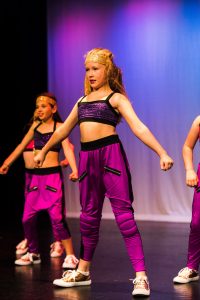Discipline
Dance teaches students to remain focused and consistent in their performance during training, learning to exercise concentration from following instructions, to completing a task and then in practice. It teaches students to fail safely, to keep trying and improving on their craft.
Discipline is a tool which aids in scholar and career success later in life. Dancers are desirable employees due also to their strong work ethic and time management skills cultivated through their training.
I’ve found it’s important to ensure discipline during classes, for sessions to run smoothly, on time without interruptions. And teaching students discipline, especially in the earlier years, Level 1, and watching as it matures into a self discipline moving forward into Level 2 and onwards.

Confidence
I’ve had a student commence at the studio lacking in confidence, shy to participate or to converse with teachers and peers. Who with the correct guidance and tuition has been able to overcome fears to play the lead role in a production, holding a whole team of young dancers together through the process.
Confidence is a value of mine, that our students feel nurtured in a positive and encouraging environment, delivering students corrections in positive manner helps to ensure a good experience for the young dancer. Our duty of care is to send students for exams only when we feel they are ready, making sure their knowledge of the syllabus is sound, so that they feel confident and prepared. Offering students stage experience, performing in front of an audience teaches dancers to be brave, courageous and to manage their nerves.
Dance classes improve a students social and emotional skills and it creates feelings of happiness. The studio becomes like a second home, a friendly community where dancers form strong bonds with their teachers and peers aiding with building their self esteem.

Goal setting
People who write down their goals are more likely to achieve them than people that don’t. Goal setting gives students purpose and a sense of accomplishment and fulfilment.
Asking students to write out their goals is a great way to keep students motivated throughout the year, it also encourages students to do homework outside of studio time. I teach my students to visualise e.g., their muscles lengthening while stretching, or executing a routine perfectly at an upcoming performance.

Artistry
As athletic as ballet is in it’s physical state, ballet is a performing art. Artistry is an essential facet to dance and it’s imperative to teach students to express themselves, to convey emotions through their face particularly their eyes and mouth, through their port de bra, head alignment and poise, to present themselves with energy, lift and strong posture. Dance is ultimately a form of entertainment where artistic qualities, creativity, beauty and individual style is what leaves the viewer touched.
The best way to develop artistry is by teaching students from kinder age choreography based on a theme, character or story telling through their movement and expression with props, costumes and appropriate music to aid with their engagement. Working on mime exercises, theatre games and basic acting skills. And then, as students get older, giving the opportunity to develop their own chorography skills during class time.
Thank you for reading! If you enjoyed this article you may also like reading A MUST READ GUIDE FOR DANCE PARENTS from our blog!

